To grade a Jefferson nickel, examine key wear areas: Jefferson’s hair and cheek on the obverse, and Monticello’s columns on the reverse. The crucial “Full Steps” designation requires 5-6 clear, unbroken step lines at Monticello’s base, indicating superior strike quality. Coins are graded from Good (heavily worn) to Mint State (uncirculated with original luster). Value increases significantly with higher grades and Full Steps designation. Critical factors include checking high-relief points for wear, presence of mint luster, date and mint mark rarity, and overall strike quality. Any interruption in step lines disqualifies Full Steps status, directly impacting collectible value.
That dusty Jefferson nickel from your pocket change could be worth significantly more than five cents—if you know how to grade it properly. The difference between a worn circulated piece and a high-grade specimen with Full Steps can mean hundreds or even thousands of dollars. Understanding the specific areas to examine and the grading criteria transforms casual coin collecting into a potentially profitable pursuit.
Understanding the Jefferson Nickel Grading Scale
Jefferson nickels, minted since 1938, follow the Sheldon Scale ranging from 1 to 70. Circulated coins typically fall between Good-4 (G-4) and About Uncirculated-58 (AU-58), while uncirculated specimens start at Mint State-60 (MS-60) and extend to a perfect MS-70.
The grading process evaluates preservation quality based on wear, luster retention, and strike sharpness. For Jefferson nickels specifically, certain design elements serve as diagnostic indicators. The high-relief portions of Jefferson’s portrait and Monticello’s architectural details show wear first, making them critical checkpoints.
Professional grading services like PCGS (Professional Coin Grading Service) and NGC (Numismatic Guaranty Corporation) use consistent standards, but learning to grade yourself helps identify valuable candidates before investing in professional authentication. A 1939-D Jefferson nickel in MS-65 with Full Steps sold for $3,840 at Heritage Auctions in 2023, while the same date without Full Steps in MS-65 brought only $480—demonstrating why accurate grading matters.
Examining the Obverse: Jefferson’s Portrait Details
Start your grading assessment with the coin’s obverse, holding it at an angle under good lighting to catch reflective luster and identify wear patterns.
Hair Detail Above the Ear: This high-point area receives the first contact during circulation. On uncirculated specimens (MS-60 and above), you should see complete hair definition with individual strands visible. Extremely Fine coins (EF-40 to EF-45) show slight flattening with most hair detail intact but some merging of fine lines. Fine grade coins (F-12 to F-15) display significant wear across the entire hair area, with only major separations visible. Good-4 specimens have almost completely smooth hair with just an outline remaining.
Cheekbone and Jawline: The cheek just below the high point of Jefferson’s face serves as another critical wear indicator. Mint State coins retain original texture and contour. Even minimal circulation creates a slight flattening visible under magnification. By the Fine grade, this area shows definite smoothness, while Good grade examples have a worn, featureless appearance.
Collar and Shoulder Detail: The raised portions of Jefferson’s collar wear quickly. Uncirculated coins show sharp, distinct lines separating the collar from the coat. Extremely Fine examples retain most definition but with slight softening. Fine grade pieces show merging of these design elements, and Good grade coins have almost no collar definition remaining.
Overall Luster: Original mint luster—the cartwheel effect created by radial flow lines from the minting process—is essential for Mint State designation. Any wear on high points eliminates this grade category. Even AU-58 coins, which appear uncirculated at first glance, show friction on the highest points that disturbs the original surface.
Decoding the Reverse: Monticello and the Full Steps Designation
The reverse side contains the most value-determining feature of Jefferson nickels: the steps at Monticello’s base.
The Full Steps Standard: Monticello’s front steps appear as horizontal lines at the building’s foundation. A Full Steps designation requires five to six complete, unbroken horizontal lines running the entire width of the steps. These lines must be crisp and fully separated without any merging, weakness, or interruption.
According to NGC data, fewer than 5 percent of Jefferson nickels from most years qualify for Full Steps, making this designation highly desirable. A 1942-D in MS-65 without Full Steps typically sells for $45-$65, while the same coin in MS-65 Full Steps commands $850-$1,200 at major auctions.
What Disqualifies Full Steps: Several factors prevent this designation. Weak strike—common in Jefferson nickels due to the design’s high relief—creates incomplete step lines even on never-circulated coins. Contact marks or bag marks in the step area from coins bumping together in mint bags also disqualify the designation. Post-strike damage, cleaning, or environmental damage affecting the steps eliminates consideration.
Other Reverse High Points: Beyond the steps, examine the triangular pediment above Monticello’s columns. Uncirculated specimens show complete detail in the raised triangle with sharp definition. Circulated coins show progressive flattening based on grade. The columns themselves, particularly the outer columns, also receive early wear. Check for completeness of vertical lines and capital details.
Building Detail and Lettering: The windows, door, and dome of Monticello should be examined for clarity. Mint State coins display all architectural features sharply. The lettering “MONTICELLO” and “E PLURIBUS UNUM” should be crisp without merging into the field on higher grades.
Step-by-Step Grading Process for Accurate Assessment
Follow this systematic approach to grade Jefferson nickels consistently:
Step 1 – Initial Assessment (30 seconds): Hold the coin by its edges under bright, natural light or a quality LED lamp. Tilt it to catch luster. Determine immediately whether the coin is circulated (shows wear on high points) or uncirculated (retains complete mint frost). This fundamental distinction separates Mint State coins (MS-60 to MS-70) from everything below AU-58.
Step 2 – Obverse Examination (2 minutes): Using 5x to 10x magnification, systematically check Jefferson’s hair above the ear, cheekbone, and collar. Compare what you see to reference images from PCGS or NGC grading guides. Note the extent of wear as a percentage—light friction on just the highest point suggests AU-55 to AU-58, while wear covering 25-50 percent of the hair indicates Extremely Fine grades.
Step 3 – Reverse Examination (2 minutes): Focus first on the steps. Count the complete horizontal lines visible. Use a loupe or magnifying glass to verify each line runs unbroken across the entire width. Even a tiny interruption disqualifies Full Steps. Check the triangular pediment and columns for wear consistent with the obverse condition.
Step 4 – Surface Quality Assessment (1 minute): Examine both sides for contact marks, scratches, discoloration, or environmental damage. Count significant marks (those visible to the naked eye) and note their location. A coin with technically MS-64 preservation but several distracting marks on Jefferson’s face would grade MS-63 or lower due to reduced eye appeal.
Step 5 – Strike Quality Evaluation (1 minute): Weak strikes plague Jefferson nickels, particularly 1940s and 1950s Philadelphia Mint issues. A coin can be uncirculated but poorly struck, showing weak detail in the hair and steps despite never entering circulation. Strong strikes command premiums, while weak strikes reduce value even in high grades.
Step 6 – Compare to Graded Examples: Reference certified examples at the same grade from PCGS or NGC online galleries. Major auction houses like Heritage, Stack’s Bowers, and Great Collections provide high-resolution images of graded specimens with realized prices.
Value Differences Across Grades and Designations
Understanding how grade affects value helps prioritize which coins deserve professional authentication. Here’s a realistic value comparison using a common date (1950-D) based on 2023-2024 market data:
| Grade | Without Full Steps | With Full Steps |
|---|---|---|
| G-4 | $0.10-$0.25 | N/A |
| F-12 | $0.50-$1 | N/A |
| EF-40 | $2-$4 | N/A |
| AU-58 | $8-$15 | N/A |
| MS-63 | $12-$20 | $85-$140 |
| MS-65 | $35-$55 | $350-$500 |
| MS-66 | $125-$200 | $1,200-$1,800 |
| MS-67 | $850-$1,400 | $8,500-$15,000 |
These figures come from Heritage Auctions realized prices and PCGS Price Guide data. The Full Steps designation becomes financially significant starting at MS-63, where it increases value by roughly 600-800 percent. At MS-67, Full Steps coins are exceptionally rare—NGC has graded fewer than 20 examples of 1950-D in MS-67 Full Steps as of 2024.
Key dates amplify these differences dramatically. A 1939-D (low mintage of 3.5 million) in MS-66 Full Steps sold for $19,200 in a 2023 Heritage auction, while MS-66 without Full Steps brought $1,680—more than 11 times the difference.
Wartime Silver Composition (1942-1945): Jefferson nickels with large mint marks above Monticello contain 35 percent silver due to wartime nickel conservation. These carry intrinsic metal value (approximately $1.25-$1.75 as of 2024 silver prices) in any grade, plus numismatic premiums for better specimens. A 1943-P in MS-66 Full Steps reached $4,560 at auction, demonstrating strong collector demand.
Critical Grading Mistakes to Avoid
Even experienced collectors make errors that result in overgrading or missing valuable details.
Confusing AU-58 with MS-60: The hardest distinction in coin grading separates About Uncirculated from Mint State. AU-58 coins show slight friction on the very highest points—Jefferson’s cheekbone and hair above the ear—that disturbs the original luster. Under magnification with proper lighting, this friction appears as a dulling or smoothing. MS-60 coins may have contact marks but retain complete luster on all high points. The difference significantly impacts value; a common date worth $8 in AU-58 might bring $18-$25 in MS-60.
Overcounting Steps: The temptation to see Full Steps on a nearly-qualified coin leads to wishful thinking. Professional grading services use strict standards—even a tiny weakness or interruption in one step line disqualifies the designation. According to PCGS, approximately 40 percent of coins submitted specifically for Full Steps designation don’t qualify upon professional review.
Ignoring Strike Weakness: A coin can be technically uncirculated—never spent in commerce—but show weak detail due to insufficient striking pressure or worn dies. Weak strikes are particularly common on 1940s-1950s Jefferson nickels from the Philadelphia Mint. These coins should not receive premium grades despite being uncirculated because the details never fully formed during minting.
Missing Cleaning or Alteration: Cleaned coins lose significant value regardless of underlying grade. Hairline scratches in a circular pattern, unnatural brightness, or reduced detail in recessed areas indicate cleaning. Professional graders at PCGS and NGC will reject cleaned coins or assign a “Details” grade—stating the technical grade but noting the cleaning, which substantially reduces marketability.
Not Checking Mint Marks: Jefferson nickels from Denver (D) and San Francisco (S) appear on the reverse to the right of Monticello. Wartime nickels (1942-1945) with silver content show large mint marks above Monticello. Certain dates with specific mint marks command significant premiums—1939-D, 1942-D, and 1950-D are notably valuable. Mistaking a common Philadelphia (no mint mark) issue for a scarce mint mark variety leads to valuation errors.
Maximizing Your Jefferson Nickel’s Market Value
Once you’ve accurately graded your Jefferson nickel, strategic decisions determine whether you realize its full potential value.
When Professional Grading Makes Sense: Submission to PCGS or NGC costs $20-$50 per coin depending on service level and turnaround time. This investment makes financial sense when the anticipated grade and value justify the expense. A coin you assess as MS-65 or better with possible Full Steps designation—potentially worth $200-$500 or more—warrants professional authentication. Common dates in circulated grades below EF-40 rarely justify grading fees.
Photography and Documentation: For coins not sent to professional services, high-quality images under proper lighting establish condition for potential buyers. Use a macro lens or smartphone with good close-up capability. Photograph both sides under diffused natural light, avoiding flash that creates glare. Include close-ups of the steps area and any notable features. These images become essential for online marketplaces, where buyers cannot physically examine coins.
Market Timing and Venue Selection: Jefferson nickels sell through various channels—coin shops, coin shows, online marketplaces (eBay, Great Collections), and auction houses (Heritage, Stack’s Bowers). Higher-grade specimens with Full Steps achieve best prices through major auction houses reaching serious collectors. Common dates in moderate grades (EF to MS-63) often sell better through direct online sales where you avoid auction house commissions of 15-20 percent.
Storage and Preservation: Proper storage maintains grade and protects value. Store individual coins in inert plastic flips or holders (avoid PVC-containing flips that cause green corrosion). Keep them in a stable environment away from humidity and temperature fluctuations. Never clean coins—even gentle cleaning creates microscopic scratches that drastically reduce value. A coin that would grade MS-65 worth $200 might drop to a “Details” grade worth $25 after cleaning.
The knowledge to accurately grade Jefferson nickels transforms what appears to be ordinary pocket change into potentially valuable collectibles. By systematically examining the specific diagnostic areas—Jefferson’s hair and cheek on the obverse, Monticello’s steps on the reverse—and understanding how the Full Steps designation multiplies value in higher grades, you can identify the specimens worth preserving or submitting for professional authentication. Start practicing with coins from circulation, compare your assessments to professionally graded examples online, and you’ll develop the expertise to spot those exceptional pieces that significantly exceed face value.
You may be interested:
- 1911 V Nickel Coin Value Guide Complete Errors List And No Mint Mark Worth Today
- 1920 Buffalo Nickel Coin Value Complete Errors List And What Your D S And No Mint Mark Are Actually Worth
- 1923 Buffalo Nickel Coin Value Complete Errors List And S Mint Mark Worth Guide
- 1925 Buffalo Nickel Coin Value Complete Price Guide For D S No Mint Mark And Error Varieties Worth Thousands
- 1926 Buffalo Nickel Coin Value Complete Guide D S And No Mint Mark Worth Plus Errors List
- Complete 1927 Indian Head Buffalo Nickel Coin Value Guide D S No Mint Mark Errors List And Worth
- How To Grade Peace Silver Dollar Using The Sheldon Scale And Key Wear Areas
- How To Grade Walking Liberty Half Dollar Inspect High Points Luster And Wear For Accurate Assessment

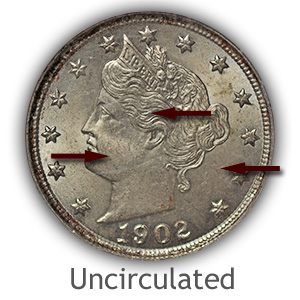
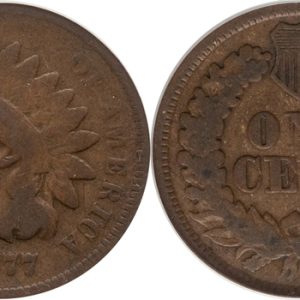
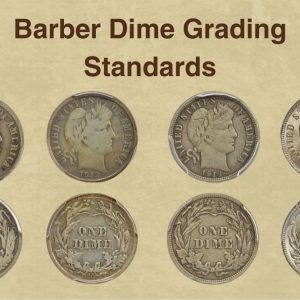
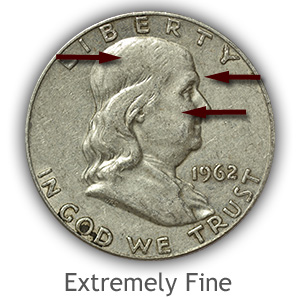
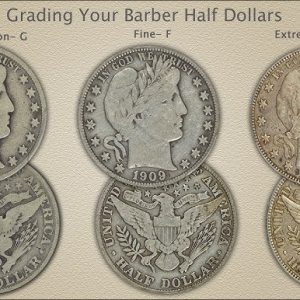
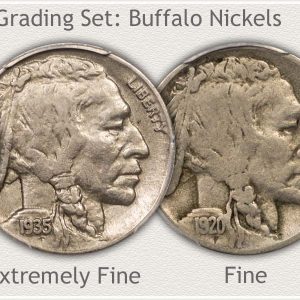
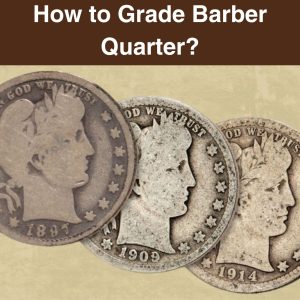
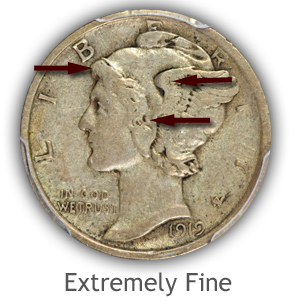
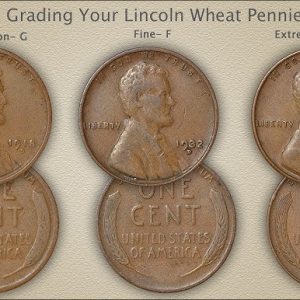
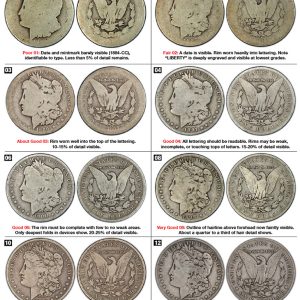
What years of Jefferson nickels are valuable?
Some Jefferson nickels are worth money due to specific errors or key dates, including the 1939-D (reverse of 1940), the 1942-D (D over horizontal D), the 1943-P (3 over 2 error), and various doubled dies like the 1949-D/S and 1955-D/S. Additionally, the 1964 SMS is a rare and valuable error coin. The 35% silver “wartime nickels” from 1942 to 1945 are also worth more than face value.
Why is the 1964 Jefferson Nickel so valuable?
Most 1964 nickels are not worth much, but some can be valuable if they are in exceptionally high-grade condition or have special features. The high value for these coins comes from specific rarities, such as those with full steps on the reverse, proof coins, or specific mint errors, rather than from a shortage of the date itself.
Are all 1942 nickels 35% silver?
The simplest identification method is checking the date. All nickels produced from 1942 to 1945 use the 35% silver composition. Any nickel with these dates contains silver content regardless of condition or mintmark.